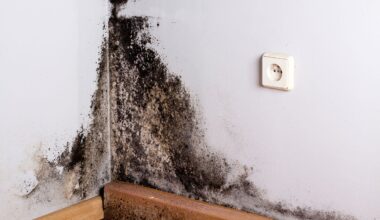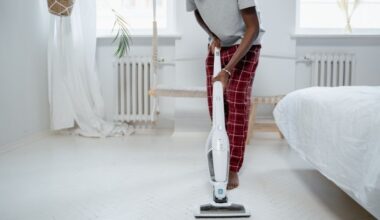A hissing toilet is a very regular occurrence in most homes. The sound of a toilet hissing might be annoying at times. You might think a reptile has infiltrated your restroom. The hissing toilet issue may persist for an extended period of time, irritating you on a frequent basis.
However, there is good news for you: toilet hissing noises can be quickly fixed once you discover the cause. If the strange and eerie sound coming from your toilet is bothering you, consider this article to be of assistance. In the following sections, you will learn about its pattern and how to correct it.
What Causes a Toilet to Hiss?
The most prevalent issue with toilets is a hissing sound. When the toilet in your bathroom hisses, the first thing that comes to mind is, “Why Does a Toilet Hiss?” If you’re looking for an answer to this question, we’ve got one for you!
The most typical cause of a hissing toilet is that air or water is traveling through your water line into the toilet tank. Let’s start with water because it’s usually a quick fix once you figure out what’s wrong. When you flush a toilet, a refill valve controls how much water returns to the tank.
If the refill valve is not functioning properly, you will have too much or too little water after each flush. A hissing sound indicates that the refill valve is still allowing some water into the tank because it has not been properly shut off.
So, if you hear your toilet hissing, immediately remove the cover from the tank. The first thing to look for now is if water is flowing down the overflow pipe. If it is, your refill valve is not closing properly when the tank is full. This implies that water is constantly draining from the refill tank, increasing your water cost.
If the water level appears to be normal but you still hear hissing, the problem could be with the water supply to your toilet, a problem further back in the plumbing, or even the presence of air in the system. A skilled plumber must evaluate all of these issues as soon as possible because the toilet hissing could indicate a leak inside an inner wall, causing more damage to your home.
Toilet Hissing Every Few Minutes
If you find your toilet producing a strange noise at random, it is a strong indication that something is wrong with it. This issue is most likely caused by a loose washer in the ball cock unit. It is typical in older toilets with a metal ball-cock-style fill valve. You can try tightening or replacing the washer and fill valve assembly to resolve the issue of the toilet hissing sporadically every few minutes.
Constant Toilet Hissing
If you notice the toilet hissing repeatedly, the issue could be due to the toilet’s inter-water valve. Over time and usage, particles of sediment or hard water may accumulate in the valve. It partially obstructs water flow into the tank. It causes a rise in water pressure in the valve, which eventually forces the water out in a narrow stream, resulting in a persistent hissing sound in the toilet.
Toilet Hissing and Not Flushing
When a toilet flushes, it is usual for it to produce noises. However, when a person is not using the toilet, it should be quiet the rest of the time. If your toilet hisses when it should be quiet, it could be an indication of a plumbing problem. The flapper chain can cause toilets hissing and not flushing. Check to see if it is excessively tight, as this may prevent the valve from closing completely. You can test for slack in the chain by jiggling it. If the flapper chain is too tight, let it go.
Toilet Hissing and Leaking
Toilets can occasionally generate weird noises such as gurgling, screaming, hissing, and so on. Usually, air or water movement is what causes these noises. If the toilet hisses, it is most likely due to water or air leaking from the fill valve. In any event, if the valve is not correctly closing, the toilet may leak. Now, let’s talk about how to remedy the hissing in your toilet.
Related: HOT TUB REMOVAL COST: Average Costs In 2023
How Do You Stop a Hissing Toilet?
If your toilet is hissing and you are looking for ways to stop it, we have some excellent solutions to help you stop the toilet from hissing.
The hissing sound is most likely caused by a faulty refill valve. Inside the toilet tank, there are two valves, one of which is a flapper valve. The one at the bottom of the tank is a refill valve that automatically replenishes the tank every time the toilet is flushed. Turn off the water supply to the toilet before replacing the valve. Flush the toilet well to drain the tank, then sponge away any excess water.
A big metal nut secures the water supply line to the toilet beneath the tank’s exterior. Simply unscrew the nut. There will also be a second nut to secure the refill tower to the tank. The second nut and the refill tower must be removed. Reconnect the water supply pipe and restore the refill tower and flapper valve. You can then turn on the water supply, but go slowly and check for leaks.
Another fast fix is to replace the two washers and screws that hold the tank to the bowl. The washers will deteriorate over time, causing the tank to leak; consequently, replacing them is preventive maintenance.
Understanding the Operation of a Toilet
A toilet consists of two major components: the toilet bowl and the toilet tank, both of which rely on gravity to perform their functions. The water is contained in the bowl, which is connected to the drain. The tank is located behind the bowl and serves as a water reserve. When someone flushes the toilet, gravity draws the water down, and the tank replenishes the bowl with more water.
Flush Valve Assembly
The flush valve assembly regulates the flushing of the toilet. The tank is linked to the hard plastic or metal component. When you flush the toilet, the flush valve assembly, also known as the ball cock, lifts a chain coupled to a rubber flapper to control the volume of water that falls into the toilet bowl.
Filling Valve
The mechanism that brings water into the toilet tank is known as the fill valve. As the tank empties, the valve fills the toilet bowl with more water. When the pipes have given enough water, this valve closes. If the tank empties for any reason, the fill valve will activate to keep the toilet at an acceptable level of water.
A float ball or pressure gauge can detect the water supply. When the float detects that there is enough water in the tank, it closes the fill valve. The plunger/piston fill valve, diaphragm fill valve, float fill valve, and float-less fill valve are the most common fill valves.
Rubber Flapper
The flapper, also known as a rubber tank ball, seals the aperture that allows water from the tank to enter the bowl. When the toilet is flushed, the rubber flapper breaks the seal between the tank water and the toilet bowl, allowing water into the tank. The flapper remains open until the tank is empty and replenished. When the toilet and tank are full, the seal closes.
Read Also: HOW MUCH DOES IT COST TO REPLACE A BATHTUB? Average Costs In 2023
Potentially Dangerous Areas in a Hissing Toilet
Because the toilet has so many parts, there are numerous potential issues that could lead to leaks and raise your water bill.
#1. Filling Valve
Sediment and debris can accumulate on the toilet’s inside wall over time, deteriorating the fill valve seal and causing it to stop operating. This causes water to infiltrate through small holes, producing a hissing sound. A faulty fill valve will also cause water to stream continuously into the tank. Excess water in the overflow tube or overflow pipe generates the hissing noise.
#2. Float
If the float is broken, it implies that it is not turning off the water once the tank has been refilled. As a result, the float will elevate the chain on the flapper, breaking the seal. Water leaking between the flapper and the seal might generate a hissing sound.
#3. Flapper
An excellent flapper will fit the seal and prevent water from seeping through. The flapper is made of rubber, which can deteriorate over time or accumulate sediment. In either case, the seal is not tight, enabling water to flow through small gaps.
The flapper chain connects the flush valve assembly to the seal. This chain should be the proper length. If the chain is overly lengthy, it may drop below the seal, resulting in water seepage. The flapper will not fit against the seal if it is too short.
#4. Toilet Water Supply
As the water tank is replenishing, an uneven supply of water from the water flow pipes may generate a hissing sound.
Read Also: HOW TO CLEAN WHITE WALLS
Identifying the Toilet Hissing Issue
To locate the source of the water leak, we don’t want you to disassemble your entire toilet. Instead, test each component to determine which one it is. First, if the problem is with the water supply, you will hear a noise when flushing the toilet. You will also notice the toilet flushing slowly or not at all. Check the fill valve next. If this is clogged, the toilet will continue to fill without stopping.
In addition, inspect the float for any puncture holes that are causing it to absorb water and sink. Close the water supply, drain the tank, and then unscrew the flap valve to inspect the flapper over the seal. This could be the issue if it appears dry and brittle or is unclean. Finally, while the tank is dry, check the flapper chain to ensure it is the correct length.
How to Repair the Toilet Hissing Sound
In general, this is a simple fix for the inexperienced plumber. Here are a couple of solutions to the problem.
#1. Troubleshooting a Blocked Fill Valve or Float
Examine the fill valve to see whether this is the source of your problem. First, turn off the water supply to the toilet. By flushing the toilet, you empty the tank. Remove the valve cap and valve seal next.
Rinse the seal and the valve under running water to remove any visible debris. If there is still debris on the seal or in the valve, use more aggressive cleaning solutions for mineral or calcium deposits to remove it. Check the entire mechanism to ensure that both are in good working order. If they aren’t, you’ll have to replace the entire item. Examine the float to check if it is damaged. If it is, it should be replaced.
#2. Flapper and Chain
Examine the flapper to see if it is the source of the hissing noise. After that, rinse it with water or a mineral cleaning solution. However, if the flapper is bent, malformed, or not closing properly, it should be replaced. In addition, inspect the chain to determine whether it is damaged. If it is, repair or replace it to make it the correct length.
#3. Water Supply
To resolve this issue, find the water supply valve. Adjust the flow until it appears to be optimal. Check to see whether the hissing noise has stopped and the toilet flushes better.
#4. Professional Plumbers
If you’ve tried everything and the hissing noise persists, don’t be afraid to bring in an expert to fix the problem. We are all aware that a bathroom is just too crucial to function properly.
Read Also: HOW TO GET INK OUT OF CARPET: Best Easy & Fast Methods
Toilet Repair Kits
There are various ways to fix a hissing toilet. The first is a repair kit. These are more expensive, but they are a wise investment. There are various types of repair kits, each with its own set of parts. The universal repair kit is the most comprehensive.
Engineers put together the universal repair kits to form a tight seal between the tank and the bowl. This is a better option than purchasing and replacing each component separately. This kit replaces the float mechanism with a big rubber gasket and bolts to form a watertight seal.
Fill valves, flapper combos, silent fills, and water-saving features are among the additional packages available. Your budget, energy-efficiency objectives, and kit adaptability should all influence the kit you purchase. Furthermore, these kits are simple to install and require few tools. As a result, they can be installed without the assistance of a plumber.
Maintaining Your Toilet
There are a few things you can do to take the best care of your toilets and avoid future problems.
- Keep your toilet clean on a regular basis. You will notice any issues with your toilet sooner.
- As soon as you identify a problem, fix it as soon as possible. This will reduce your water bill while also preserving the remainder of the toilet system.
- Examine the inner workings of the toilet tank by removing the back cover to check if you notice any issues with the water level, refill valve, attached float, or seal.
- Do not flush anything other than toilet paper down the toilet, and instruct any children in the house to do the same. Additionally, ensure that the toilet paper you are using is biodegradable.
- If you reside in a hard water location, consider using vinegar on a regular basis to dissolve the deposits in the water tank that clogs the valves and pipes.
Is There a Hissing Sound Coming From My Toilet?
No, if you hear a hissing noise, you must treat the issue as quickly as possible.
Is a Hissing Toilet a Water-Waster?
Yes, a hissing toilet has an undiagnosed leak. Toilet leaks can waste thousands of gallons per month. If your water bill is larger than usual, it is possible that one of your toilets is leaking.
Is a Hissing Toilet Considered an Emergency?
A hissing toilet indicates a leak but is not an emergency. However, you or a plumber should solve this problem as quickly as possible.
How Much Does a Plumber Charge to Repair a Hissing Toilet?
Plumbers typically charge between $72 and $82 per hour, not including parts. The cost of repairing a hissing toilet varies because there are numerous potential causes. Between $130 and 310 dollars is what the typical toilet repair costs.
Are Some Toilets Superior to Others?
In most households, the two most prevalent toilet styles are gravity-feed and pressure-assisted. Many plumbers believe that gravity-feed toilets with larger tanks are superior because the gravity is stronger, resulting in a better flush. The most critical aspect is to maintain and check your toilet.
What Is the Price of a Complete Fill Valve?
Most fill valves range in price from $50 to $150.
Why Should I Simply Flush the Toilet Paper?
Manufacturers create toilet paper to dissolve in water, while other materials do not. Items that do not degrade put strain on the toilet and the wastewater system.
When Should You Hire a Professional?
If neither of these options works or the problem appears to be too difficult to handle on your own, you may need to replace the entire valve. A qualified plumber should handle this difficult task. Call your plumber and explain the situation. Most of the time, they will be able to resolve your issue within a few days.
Related Articles
- HOW TO PAINT A BATHTUB: DIY Step By Step Guide
- WHY IS MY TOILET BUBBLING, AND WHAT YOU NEED TO DO?
- TOILET DRAIN CLEANER: Best Toilet Drain Cleaners In 2023
- TOILET NOT FILLING UP: Causes and How To Fix It.
- DRAIN TILE INSTALLATION: How To Install Drain Tiles






